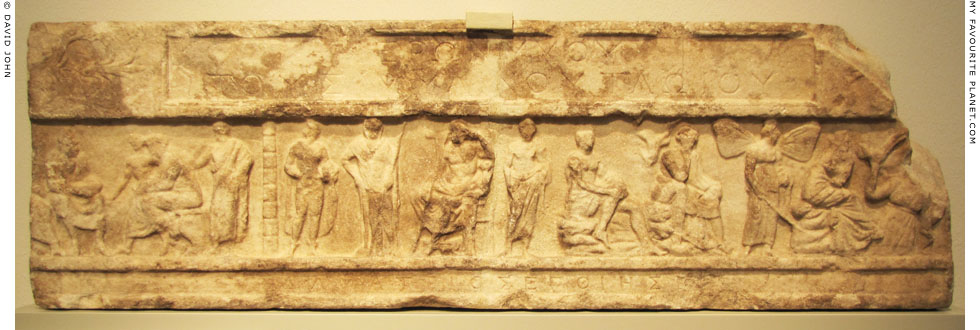Hieronymus of Tlos (Ἱερώνυμος, Hieronymos, circa 290-230 BC), also known as Hieronymus of Rhodes, was a Peripatetic philosopher and historian of literature from Tlos, Lycia [1].
He was a philosopher the Peripatetic school founded by Aristotle at the Lyceum in Athens (see Digging Aristotle at The Cheshire Cat Blog), although his opinions appear to have divurged from those of the Peripatetics of his time, provoking the hostility of other philosophers, including Lyco of Troas, the head of the Peripatetics, and the Academic philosopher Arcesilaus. He left the Peripatetics and founded an eclectic school, defining the goal of life as freedom from pain and trouble, and refuting the notion of pleasure as an end in itself.
His best known book was a work on ethics, but he also wrote about literature, history, and rhetoric. The known works include: On suspension and judgement, On drink, Symposium, On not being angry, On poets, On Isocrates, Historical memoranda, Miscellaneous memoranda, Letters.
None of his works have survived, and the little that is known of them and his life has been gleaned from mentions and quotations by later authors, particularly Cicero, as well as Athenaeus, Diogenes Laertius and Plutarch. Most of these writers refer to him as Hieronymus of Rhodes. Many of the fragments reveal his penchant for literary gossip, as for example in this anecdote related by Athenaeus:
Euripides the poet, also, was much addicted to women. At all events Hieronymus, in his Historical Commentaries, speaks as follows: "When someone told Sophocles that Euripides was a woman-hater, 'He may be,' said he, 'in his tragedies, but in his bed he is very fond of women.' "
Athenaeus, The Deipnosophists, Book 13, Pages 551-571.
Translated by C. D. Yonge, 1854. At attalus.org.
There is no known statue or portrait of Hieronymus; the best known ancient artefact associated with him is the relief from a funerary monument, discovered on Rhodes, dedicated to "Hieronymos, the son of Simylinos, from Tlos" (
see photo below).
